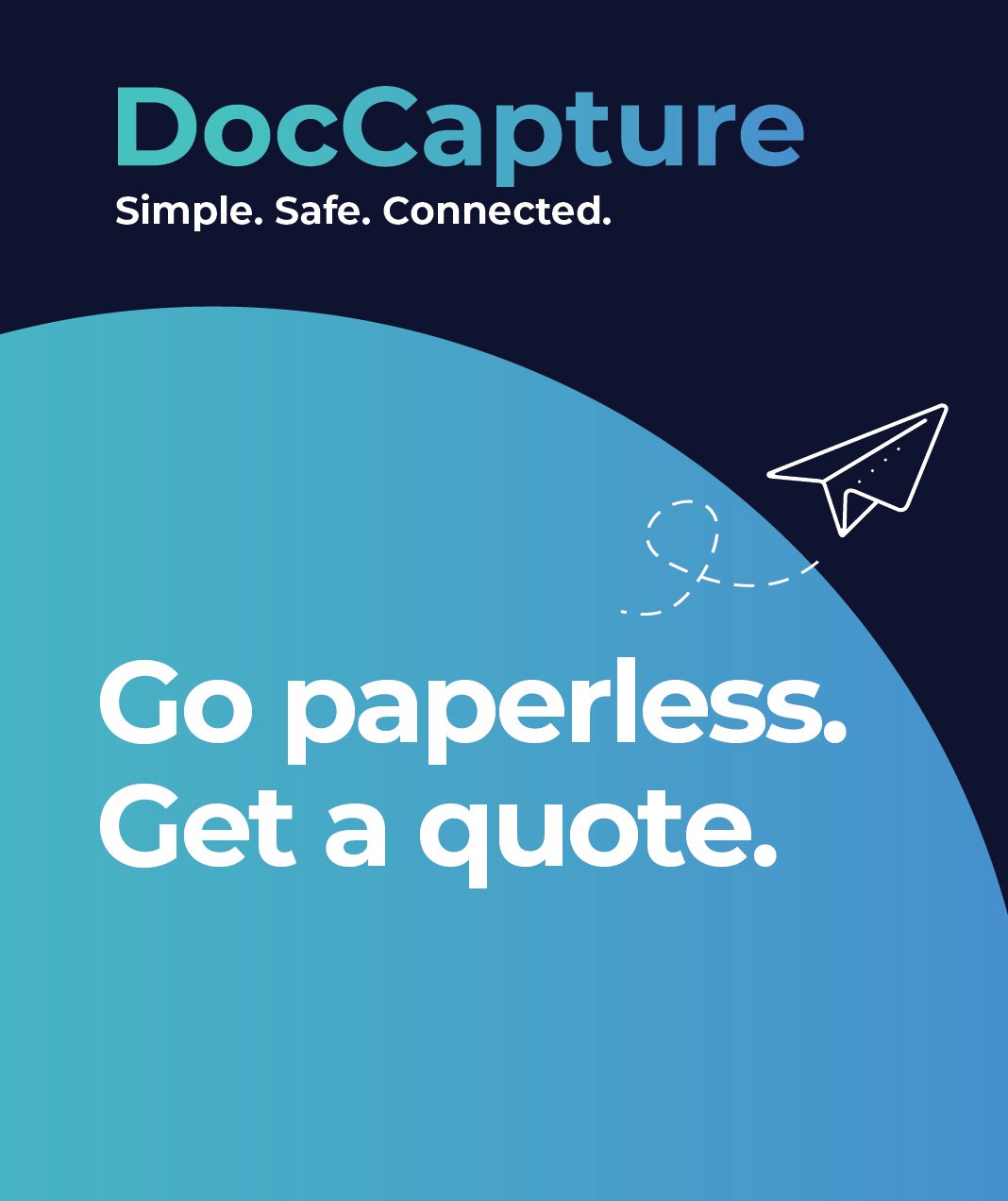Cutting Costs without Cutting Corners: Document Scanning in Schools
Table of contents
Across the United States, K–12 school boards are navigating a complex landscape of shrinking budgets, rising operational demands, and ever-tightening compliance mandates. With every dollar scrutinized and every staff hour counted, administrative teams are increasingly expected to do more with less. For Chief Information Officers, Records Management Officers, and Superintendents, the question isn’t just how to maintain operational integrity—it’s how to improve it while reducing costs.
One often-overlooked area with significant cost-saving potential is document management. Paper-based processes still dominate many school systems, resulting in bloated storage costs, inefficient labor hours, and elevated risks of non-compliance. As the push toward digital transformation grows stronger, document scanning emerges not only as a technological upgrade but as a strategic lever for operational efficiency and budget control.
In this blog, we’ll explore how cost reduction in schools through document scanning can deliver measurable results. From eliminating physical storage expenses to improving staff productivity and enhancing data security, scanning is more than a modern convenience—it’s a fiscal imperative.
The Hidden Costs of Paper Document Management
While paper may seem like a low-cost medium, its long-term impact on school operations tells a different story. The true cost of paper-based systems lies in a trio of hidden expenses: physical storage, labor inefficiencies, and compliance risks.
Storage That Consumes Space and Budgets
School districts often dedicate entire rooms—or even offsite facilities—to store student records, administrative forms, and HR files. This physical storage not only incurs rental and maintenance costs but also ties up valuable space that could otherwise be used for instructional or student support services.
By adopting a digital approach, school boards can drastically reduce or even eliminate these costs. In fact, Document Scanning for Schools highlights how scanning can convert entire rooms of paper into a secure, searchable digital archive.
Labor Inefficiencies in Day-to-Day Operations
Manual filing, retrieval, and duplication of paper records consume countless hours of administrative time. Staff members may spend minutes—or even hours—locating specific documents, often disrupting their core responsibilities. When multiplied across campuses and departments, this inefficiency becomes a silent budget drain.
Digitizing files streamlines these processes, enabling instant access and automated workflows that free up staff for more meaningful, mission-driven work.
Compliance Risks with High Financial Stakes
Regulatory compliance is a moving target, especially when managing sensitive student records. Misfiled documents, incomplete audit trails, or unauthorized access can result in costly penalties and reputational damage.
Schools that implement robust scanning and digital record systems strengthen their data governance. As detailed in Future-Proofing Education: Digitizing School Board Operations, digital records not only support compliance but also facilitate faster response times during audits or legal inquiries.
Cost Reduction Benefits of Document Scanning
Switching from paper to digital records isn't just a modern upgrade—it's a strategic move that delivers tangible cost reductions. Here’s how document scanning supports financial efficiency across school operations.
Eliminate Physical Storage
By digitizing records, schools can eliminate the need for large filing cabinets, dedicated storage rooms, or costly offsite archive facilities. This not only reduces rental or storage costs but also reclaims valuable physical space that can be repurposed for instructional or student support uses.
Going Paperless: The Future of School Board Document Management outlines how this shift can be transformative, particularly in urban districts where space is at a premium.
Improve Staff Productivity
Digitized documents are easily indexed, searchable, and accessible from secure platforms, allowing staff to retrieve and share files in seconds rather than hours. This operational efficiency reduces administrative overhead and increases staff capacity for strategic initiatives or student-facing activities.
The result? Schools operate more smoothly, with fewer bottlenecks and better use of personnel resources.
Strengthen Data Security
Paper records are vulnerable to theft, loss, and environmental damage. In contrast, digital documents can be encrypted, access-controlled, and backed up for disaster recovery. Implementing a secure digital document management system significantly reduces the risk of data breaches and protects sensitive student and staff information.
For school leaders focused on compliance, The Impact of Document Scanning on School Boards provides a closer look at how digitization enhances information security.
Ease Regulatory Compliance
Education administrators must adhere to federal and state mandates regarding student privacy, record retention, and data access. A digital archive simplifies compliance by enabling consistent naming conventions, automated retention schedules, and quick retrieval during audits.
Best Practices for Scanning Student Records offers practical insights into aligning scanning efforts with compliance requirements.
Use Cases in School Environments
Document scanning isn't a one-size-fits-all solution—it’s a versatile tool that addresses diverse needs across school departments and campuses. Here’s how districts are putting it into action.
Scanning Student Records
Student files—containing enrollment forms, transcripts, IEPs, disciplinary records, and health documentation—are among the most document-intensive areas in K–12 education. By scanning these records, schools gain rapid, secure access while improving FERPA compliance.
The article Scanning Student Records illustrates how digitization supports the full student lifecycle—from enrollment to graduation.
For a deeper dive, From Enrollment to Graduation: The Digital Journey of Student Records offers insights into the benefits of maintaining a consistent digital record trail.
Digitizing HR and Administrative Files
Human resources departments manage sensitive documents like contracts, certifications, evaluations, and background checks. Digitizing these records ensures confidentiality, simplifies access, and supports better retention tracking.
Similarly, administrative files—budgets, procurement records, board meeting minutes—are easier to manage and audit when stored digitally. This translates to greater transparency and smoother operations.
Managing Decentralized Data Across Campuses
Large school districts often struggle with fragmented data stored in multiple buildings. Document scanning creates a centralized digital repository that ensures staff at any campus can access what they need without physical transfers or delays.
This capability is especially valuable for multi-site districts looking to streamline operations and unify record management policies.
As explained in Digital Transformation for School Boards, centralizing access to documents is a critical step toward modern, efficient school board governance.
Addressing Common Concerns
While the advantages of document scanning are clear, school boards often raise legitimate concerns about cost, compatibility, and data privacy. Here’s how these challenges can be effectively addressed.
ROI vs. Upfront Cost
One of the most common concerns is the initial investment required to digitize records. While scanning does carry upfront costs, the long-term return on investment (ROI) is substantial. Reduced storage expenses, fewer labor hours, improved compliance, and minimized risk of penalties all contribute to sustained financial benefits.
As outlined in How School Boards Can Benefit from Document Imaging, cost savings often begin to materialize within months of implementation, especially in districts with high volumes of paper records.
Compatibility with Legacy Systems
Districts frequently worry about integrating scanned documents with existing student information systems (SIS), HR software, and compliance platforms. Modern scanning providers offer solutions that ensure seamless integration, allowing scanned documents to be indexed and searchable within current workflows.
Providers like DocCapture work closely with school IT teams to ensure digitized records are fully compatible with both legacy systems and future-ready platforms.
Data Protection and Privacy
Protecting student and staff data is paramount. Reputable scanning partners use advanced encryption, access controls, and secure cloud or on-premise storage to ensure compliance with FERPA, HIPAA, and state-level privacy regulations.
For more guidance, The Need for K–12 Schools to Scan Student Records explores how digital transformation can actually enhance data security and audit readiness.
Partnering with an Expert
Choosing the right document scanning partner is just as important as the decision to digitize. School boards need a provider who understands the nuances of educational compliance, handles sensitive data with care, and can scale solutions to fit unique district needs.
Why Experienced Providers Matter
An experienced partner ensures that document scanning projects are executed efficiently and securely. They help develop a structured roadmap—assessing current records, prioritizing scanning phases, ensuring metadata consistency, and training staff on new digital workflows.
Additionally, expert providers are equipped to manage both the technical and regulatory requirements of educational institutions. This includes chain-of-custody tracking, retention policy alignment, and integration with existing IT systems.
DocCapture’s Value Proposition
DocCapture specializes in document scanning services tailored to K–12 environments. From Student Records Scanning to district-wide digital transformation initiatives, the team brings a proven track record of helping schools modernize their operations while staying fully compliant.
By working with DocCapture, school boards gain:
-
Access to high-volume scanning capabilities
-
Secure data handling practices
-
Integration support with current platforms
-
Personalized service from discovery to deployment
With an emphasis on cost-effective, results-driven solutions, DocCapture empowers school administrators to embrace digital transformation with confidence.
Conclusion
As school boards face increasing pressure to balance tight budgets with high performance, document scanning offers a strategic, scalable solution. By digitizing student records, HR files, and administrative documents, educational institutions can reduce costs, increase productivity, and strengthen compliance—all while positioning themselves for long-term success.
The path to digital transformation doesn’t have to be overwhelming. With the right partner and a clear roadmap, your district can begin realizing immediate and sustained benefits.
Ready to reduce operational costs and streamline your document management?
Fill out our “get a quote” form to start your journey toward a more efficient, compliant, and future-ready school system.
Share this
You May Also Like
These Related Stories

Cost-Effective Governance: Cutting Costs with Document Scanning

Streamlining School Operations: The Case for Document Scanning

